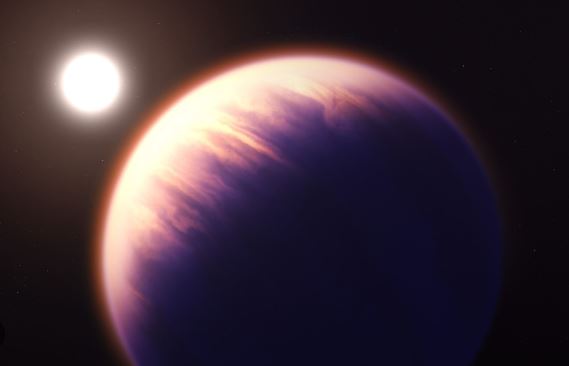


 6:52:51
6:52:51  2023-05-11
2023-05-11  667
667

Bizarre exoplanet breaks all the orbital rules
In our solar system, the planetary orbits all have a similar orientation. Their orbital planes vary by a few degrees, but roughly the planets all orbit in the same direction. This invariable plane as it's known also has an orientation within a few degrees of the sun's rotational plane. Most planetary systems have a similar arrangement, where planetary orbits and stellar rotation are roughly aligned, but a few exoplanets defy this trend, and we aren't entirely sure why.
Common orientation within a planetary system makes sense given how planetary systems form. The protostellar cloud out of which a star and its planets form usually has some inherent rotational momentum. As a star begins to coalesce, a protoplanetary disk forms around the star. Since the planets form within this disk, they all end up with similar orbits. Things can be more complicated with binary or multiple-star systems, but you'd expect single-star planetary system to have an invariable plane similar to ours. However, this isn't true for a planetary system known as WASP-131, as a recent study shows.
WASP-131 is known to have at least one planet, 131b. It's a hot gas planet with a mass a bit less than Saturn that orbits 131 every five days. Earlier studies of 131b found the planet unusual because of how thick its atmosphere is. Although its mass is only a quarter that of Jupiter, its diameter is 20% larger than Jupiter's. 131b has such a low density for a gas planet that it's known as a super-puff planet.
The planet was discovered via the transit method, which means it passes in front of its star from our point of view. It's an effective way to find exoplanets, but it can also be used to verify the rotational motion of the star. Because of stellar rotation, light coming from the region of the star rotating toward us is slightly blue shifted, and light from the region rotating away from us is slightly redshifted.
This means that spectral lines from the star are blurred a bit. The effect is known as Doppler broadening. As the planet passes in front of the star, it blocks a part of the blue shifted and redshifted regions in turn. This causes the spectral lines of the star to shift a bit. This Rossiter–McLaughlin effect as it's known allows astronomers to measure the orientation of stellar rotation.
When the team analyzed the rotation of WASP-131, they found it wasn't similar to that of its planet. The orbit of 131b is tilted about 160 degrees from the rotational plane of the star, meaning that it is in a high, almost polar retrograde orbit. Of course, this raises the question of just how the planet could have gotten such an odd orbit.
One idea is a process known as the Kozai effect. Dynamical interactions between the planet, its star, and other planets in the system can cause the orbit to shift away from the invariant planet. We see this in our own solar system with Pluto and Neptune, which has tilted Pluto's orbit over time. The Kozai effect is more pronounced with smaller planets, however, and interaction between planet and star alone isn't enough to explain such an inclined orbit. Another possibility is a magnetic interaction between the planet and the protoplanetary disk early in its formation period.
Although the mechanism behind the odd orbit isn't clear, it does follow a pattern seen with many hot gas exoplanets. About a quarter of them have significantly tilted orbits. It seems that these planets sometimes get way out of line.
Reality Of Islam |
|

Water may s

"It is

The process

Astronomers
 9:3:43
9:3:43
 2018-11-05
2018-11-05
10 benefits of Marriage in Islam
 7:5:22
7:5:22
 2019-04-08
2019-04-08
benefits of reciting surat yunus, hud &
 9:45:7
9:45:7
 2018-12-24
2018-12-24
advantages & disadvantages of divorce
 11:35:12
11:35:12
 2018-06-10
2018-06-10
 6:0:51
6:0:51
 2018-10-16
2018-10-16
 6:14:17
6:14:17
 2018-06-21
2018-06-21
 9:30:2
9:30:2
 2021-11-12
2021-11-12
 7:59:14
7:59:14
 2018-06-21
2018-06-21
 2:42:26
2:42:26
 2023-02-02
2023-02-02
 2:13:43
2:13:43
 2022-05-27
2022-05-27
 11:34:48
11:34:48
 2022-06-29
2022-06-29
 2:5:14
2:5:14
 2023-01-28
2023-01-28
 5:41:46
5:41:46
 2023-03-18
2023-03-18
| LATEST |